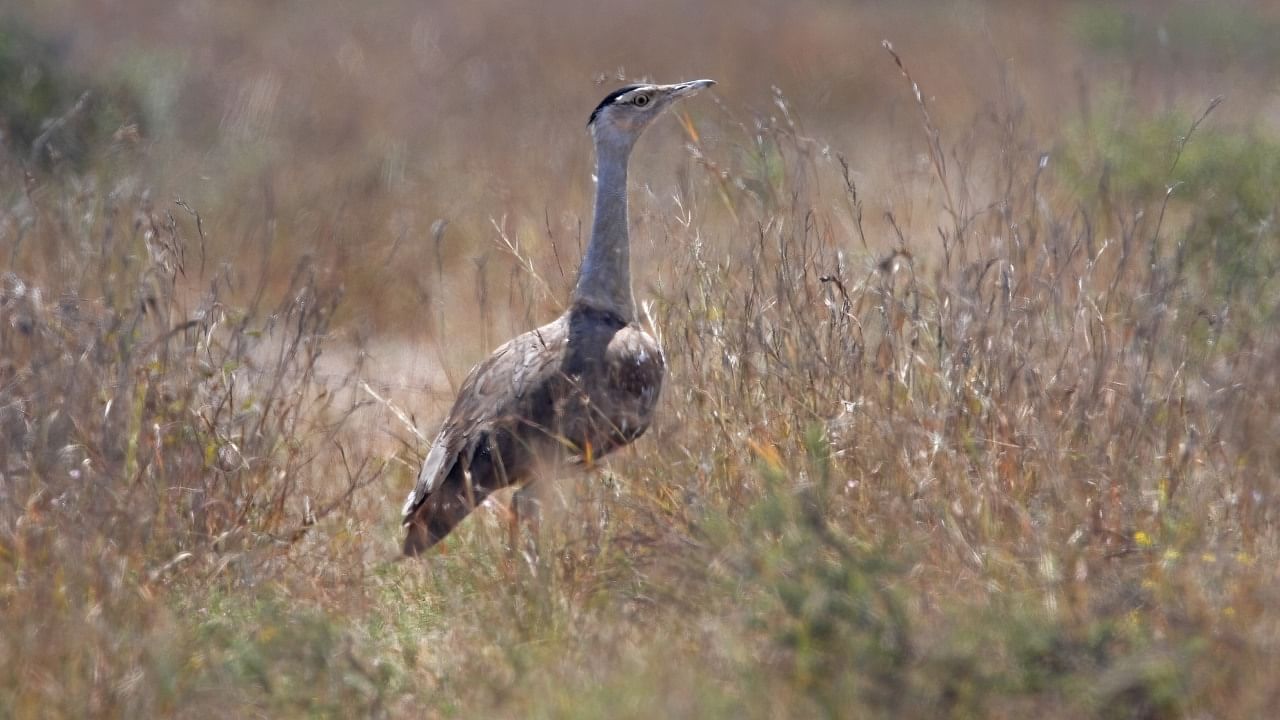
With less than 150 Great Indian Bustards (GIB) and less than 700 Lesser Floricans left in the wild, India needs to take urgent measures to prevent the extinction of these two residents and endemic bustard species of the Indian subcontinent, according to the The Corbett Foundation (TCF).
Bustards need agro-pastoral landscapes and the grassland ecosystem for their survival.
“Renewable energy projects are being promoted on a very large scale in the so-called ‘revenue wastelands’ of Rajasthan and Gujarat, which are prime bustard habitats. Several bustard deaths due to collisions with overhead power lines have been documented in the last decade. Unless the existing and upcoming power lines located in the critical bustard habitats are buried underground, and those passing over the potential habitats are installed with bird flight diverters, as per the Supreme Court’s landmark order dated 19 April 2021, it would be impossible to prevent the extinction of GIB and Lesser Florican,” the TCF said in its annual report.
Timely dialogue with conservationists and wildlife scientists while choosing project locations for future power infrastructure is also a crucial step to be taken to preserve the last remaining habitats of bustards.
Also Read | Treasured 'shit': Fossilised dung can offer unusual insight into ancient animal behaviour
Simultaneously, alteration and degradation of habitat, uncontrolled grazing, direct disturbances caused by free-ranging dogs, the sporadic incidence of poaching of associated wildlife, and the increasing use of inorganic pesticides are additional critical issues that must be addressed in bustard landscape by involving the local community.
India must ensure safe and secured habitats for the future reintroduction of captive-bred bustards from the Conservation Breeding Programme. Conservation actions with a science-based long-term vision will prevent the extinction of these magnificent birds of the Indian subcontinent.
During the IUCN World Conservation Congress held in Marseille, France, from 3-11 September 2021, the Member’s Assembly voted in favour of a motion titled ‘Preventing the extinction of the Great Indian Bustard (Ardeotis nigriceps) in India’.
The Corbett Foundation, a Member of the IUCN, was the proponent of this Motion and received support from the following national organisations: Aaranyak, Bombay Natural History Society, Gujarat Ecology Society, Wildlife Conservation Trust, Wildlife Protection Society of India and Wildlife Trust of India. International organisations like BirdLife International (UK) and the Royal Society for the Protection of Birds (UK) also supported the Motion.
This Motion was passed into a Resolution, which is now a part of IUCN’s general policy that guides conservation strategies across the world. This Resolution will help to further intensify and strengthen the efforts to conserve and protect the last surviving population of the Great Indian Bustard in India.